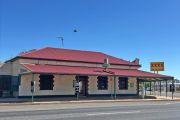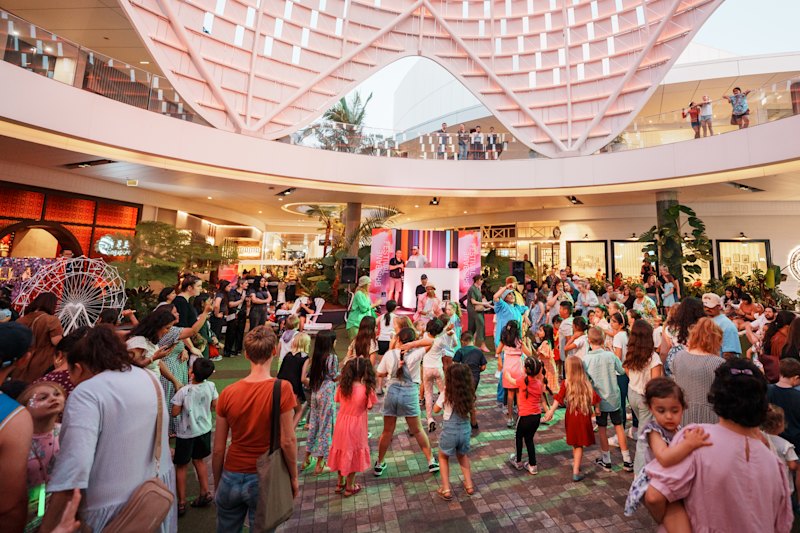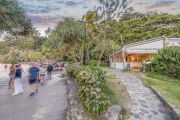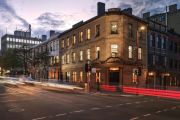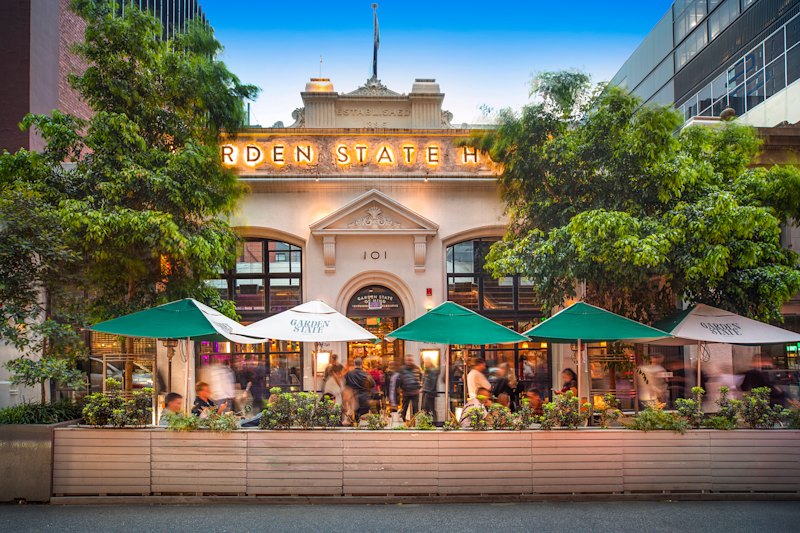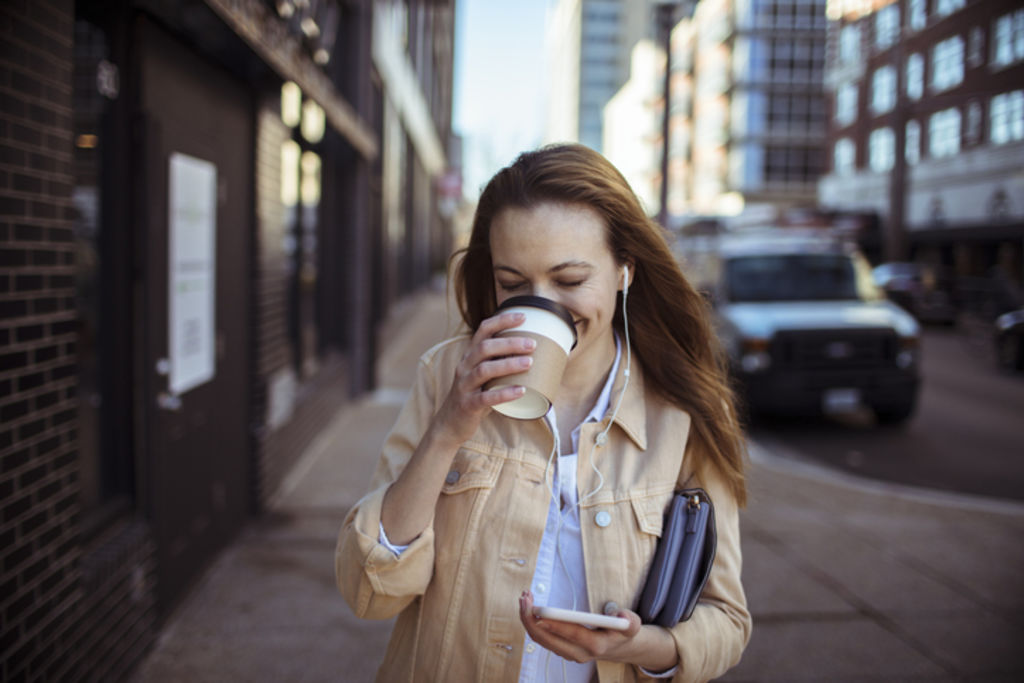
Melbourne's most in-demand shopping strips run on coffee and yoga
In the midst of a cost-of-living crisis exacerbated by high inflation and interest rates, the work-from-home era has seen Melbourne’s shopping strips experience a period of stabilisation following last year’s record low vacancy rates.
The flexible work-life-balance shift has seen Melburnians pop down to support local villages like High Street in Armadale, Lygon Street in Brunswick East, Chapel Street in South Yarra, Bridge Road in Richmond, Smith Street in Collingwood and Puckle Street in Moonee Ponds.
This retail success can also be attributed to landlords offering tenants more flexible lease terms, population growth, and the delivery of residential developments near shopping strips, which boosts spending power.
“What has kept the strips thriving are the fundamental changes to the way we live our lives in 2024,” says Fitzroys associate director James Lockwoodon the release of the company’s latest Walk the Strip report.
“Working from home is the main driver, which has supported suburban business as greater numbers of Melburnians go to their local villages to get a coffee, something to eat, go to the gym or do a pilates or yoga session, or get their hair and nails done.
“Regardless of what’s been thrown at them, our strips have remained our favourite places to live, work and play.”
This year, the vacancy rate of the city’s famous strips sit at 6.3 per cent, a smidge above last year’s long-term-low of 6.2 per cent, and a decent drop from the average long-term vacancy of 7.4 per cent, according to the annual report.
More than 70 per cent of the 37 shopping strips surveyed also boasted vacancy rates lower than the long-term average, a reflection of landlords being more willing to meet the market on rents, and a sign of increased spending power thanks to a significant number of residential developments completed in the past year.
“Landlords have largely been more willing to get deals done,” Lockwood says.
What kind of shops make a strip successful?
Barbers and hair salons are represented highly in leasing deals, supported by the feel-good-factor that arose during the COVID pandemic, when isolated shoppers were keen to treat themselves to lift their spirits.
Close to a long-term high, service retailers represent 28.1 per cent of shops in strips, coming in behind food and beverage at 30.9 per cent, and specialty shops at 34 per cent, according to the report.
“Service users have continued to take up space and are back to nearly an all-time high,” Lockwood says, adding that, whereas services such as dentists, radiologists and physios “were once at the periphery of a strip or in level one spaces, they’re now taking more central and prime street-level spaces”.
The pandemic boom in hospitality hustles – born out of a huge demand for takeaway meals during Melbourne’s record-long lockdowns – also helps explain why the vacancy rate is lower than the long-term average.
Savvy tenants who can identify market gaps and know their audience, demographics and consumption patterns are taking advantage of demand for good-quality food.
Smaller fitted-out spaces appealed to tenants as they were quicker to move into and cheaper while providing exposure to new markets – something businesses continue to pivot towards.
“People need to eat, and the shift towards takeaway meals – whether they’re picked up by the customer or delivered via services such as Uber Eats – has continued to support hospitality trade,” Lockwood says.
“Businesses continue to look for opportunities to take advantage of this, as well as capture new markets.”
Spending power rises as population grows
Melbourne’s population grew by 167,500 people, or 3.3 per cent, year-on-year, according to the latest Australian Bureau of Statistics figures.
“Surging population growth has also been a major driver in supporting the sheer number of people spending time in our strips,” Lockwood says.
Which Melbourne shopping strips are the most popular?
“Without a doubt, High Street, Armadale, is the most in-demand strip in Melbourne – and possibly Australia,” says Lockwood’s colleague, Fitzroys associate Lewis Wadell.
However, it was perennial winner Church Street, Brighton — one of Melbourne’s most exclusive suburbs situated 11 kilometres south-east of the CBD with a median house price around $3.15 million — that recorded the lowest vacancy rates at 0.7 per cent.
Church Street has also traditionally commanded some of the highest rents, with a queue of high-end boutiques and national traders “jostling to get into the supply-constrained strip”, Lockwood says.
Recent deals brokered in the tightly held strip include OPSM and Rodd & Gunn, joining labels like Country Road, Nike, Lululemon, Gorman and Mecca Cosmetica.
“It says a lot that Rodd & Gunn selected Church Street, Brighton for its first Melbourne shopping strip store,” said Fitzroy’s agent Mark Talbot, who co-brokered the deal. “Retailers don’t make these decisions lightly.”
Meanwhile, inner-city High Street, Armadale – which gives Brighton a run for its money with high-end boutiques from designers like Zimmerman, Camilla and Marc, Scanlon Theodore and Viktoria & Woods – takes the crown for the most expensive rents in suburban Melbourne, charging up to $2000 per square metre, compared with Church Street’s $1300 to $1400 per square metre.
High Street is also close to fully tenanted, recording a vacancy rate of 2.3 per cent. The recent development of 115 apartments on the strip has contributed to its success, as has the arrival of other quality retailers such as Lune Croissanterie, Sydney butcher Victor Churchill and The Leaf Grocer.
“The surge we’ve seen in retailers looking to get a foothold on High Street, Armadale, is unprecedented,” Waddell says.
The spending power of shoppers in affluent neighbours such as Toorak, Malvern and South Yarra doesn’t hurt either.
Generational renewal and invigoration initiatives
Among the city’s other key shopping strips, Acland Street in St Kilda – an inner bayside suburb – showed the biggest sign of revival, with a 3.4 per cent drop in vacancy rates to 9.4 per cent, better than pre-pandemic times. The rates reflect the recent completion of the $540 million Saint Moritz apartments, with other developments and invigoration initiatives in the pipeline for nearby Fitzroy Street and Acland Street.
The report noted a number of other strips benefited from generational renewal, including Puckle Street in Moonee Ponds . It has a long-term low vacancy rate of 3.1 per cent, taking wins from the new 114-apartment Penny Lane complex, a Palace Cinema, and the $2 billion redevelopment of Moonee Valley Racecourse.
Meanwhile, one of the city’s most famous shopping strips that fell on hard pandemic times is Chapel Street in South Yarra, which has bounced back with a long-term low vacancy rate of 7.1 per cent. At its vacancy peak, it reached 20.4 per cent.
The strip’s rebirth is partly thanks to confidence in the $2.75 billion revamp of the Jam Factory, plus multiple other upcoming developments. Tenants have also been attracted to the strip by more flexible rental terms.
Strips in the city’s inner north, deemed by Time Out as some of the coolest strips in the world, also stood out. Lygon Street, Brunswick East, has a low vacancy rate of 3.7 per cent, and nearby Smith Street, Collingwood is just 3.2 per cent.
Meanwhile Bridge Road, Richmond, in the city’s inner east, was once a hub to factory outlet retailers. It also fell on tough times during the pandemic, and now varies in vacancies depending on where eateries are and which roads intersect it.
The stretch between Church and Lennox streets attracts the dubious honour of having the highest vacancy rates in Melbourne at 14.7 per cent. The rate drops a little towards Punt Road, where trade from the Epworth Hospital helps bring it down to 13.8 per cent.
Housing developments near retail spaces
This important intersection of commercial developments and residential amenities has seen demand rise for tenants such as beauty salons, eateries, coffee, shops and fitness centres, the report has found.
A number of new residential developments on Melbourne’s shopping strips were completed last year, with less investment in new builds this year, dropping to 0.7 per cent from 1.5 per cent.
A trend towards saving on inflated building costs has seen landlords hold on to fitouts across each of the retail sectors.
“Comprehensive, high-end hospitality fitouts can cost as high as between $5000 and $7000 per square metre at the moment,” Lockwood says.
“We’re seeing that extend to other types of fitouts, from shelving and racking for clothing boutiques to equipment and furniture for dentists, as tenants are more conscious of capital outlay when it comes to setting up their business.”
